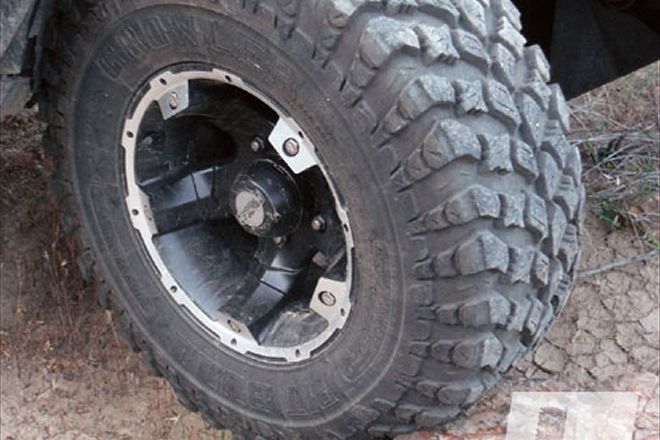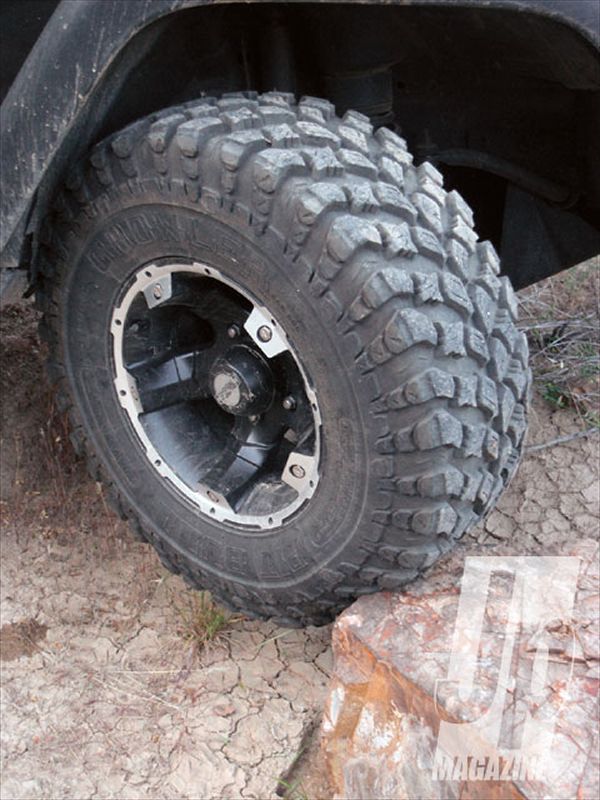
 Pete Trasborg
Brand Manager, Jp
Pete Trasborg
Brand Manager, Jp

In the time of radial tires, the Pit Bull Tire Company has come to be famous for an aggressive line of bias-ply tires that work great off-road. Coming from such an aggressive lineage, we tested these Growlers like we would any other mud tire-we broke them in for 1,000 miles on-road, and then took them in the dirt to pound on them and make them yelp for mercy.
In fact, it wasn't until we came in off the trail and sat down to write this story that we realized Pit Bull actually classifies this tire as and all-terrain. All along we were treating it and comparing it to other mud tires, and it stacked up rather well.
We got our hands on some 31x10.50R15 Growlers and mounted them on a set of matte black Viper wheels from Black Rock Wheels to put both tire and wheel through their paces.
How They Work
Let's start with the wheels: the Viper wheel is just a cool-looking rim in the popular five-spoke design, and we are happy to say it spins true on the balancer, with all five rims (without tires) coming up as needing no weight, unlike some aftermarket rims. After some high-speed gravel attacks that would have taken paint off our old steel wheels, these still looked good and they give us just the right look without breaking the bank.
Now, the Growlers that wrapped around those rims, true to their heritage, work very well off-road. We've had problems in the past with directional tires getting us into the mud, but not being able to back out and to this day are always a bit leery of directional tread in mud situations. So, after airing down to 10psi, we went into the first few mud holes with some trepidation. We are happy to say that the tread clears out well, whether going forward or backward, and we were able to back out of any hole we were able to drive in, until we were buried to the axles.
In sand, there is a bit of a tendency to dig. It isn't horrible and driving like you should in sand (slowly off the clutch, no sudden acceleration from a stop) produced good results. If we tried to launch the Jeep from a standing start, we got mixed results depending on just how loose the sand was: sometimes we'd get going with no problem, sometimes the Jeep would dig down a bit and then start going, resulting in lots of roost, and a couple times it dug down to the axles before building any momentum. When it dug down, on a hill we were able to get out by going downhill, but on level ground, we needed a tug.
In the rocks, at 10psi, these things stuck like glue. The carcass wraps around and envelopes the rocks with ease, while the many lugs and somewhat softer rubber combine to really grip and propel the Jeep up obstacles. Anything with rocks was no problem, the only time we ran into issues was when it was a steep climb with loose dirt, almost like talcum powder at the bottom, and we just couldn't get up and had to take a strap. However, on a trail run, there was a rockclimb immediately after a water crossing that we got up faster, due to not having to "heat up" the tires as much-again that softer compound and tread blocks working together.
Unlike its bias-ply sibling, this Growler has a flat tread and a larger contact patch with the road, so we expected great on-road manners. It spun smoothly on the road, with no lug slap to be noticed, and behaved fine in rain. We couldn't find any standing water to mess with hydroplaning, but quick starts and quick stops were not dramatic. However, compared to the radials we had on the Jeep before, we could feel the extra squirm of the tire under the Jeep and on twisty mountain roads, we had to slow down from the speeds we were able to comfortably do with other tires.
Bottom Line
Knowing what we know now, we have to say these are hands-down the most aggressive all-terrains we've ever tested, and, as such, likely work the best off-road of any all-terrain we've run across. Really, the tire acts more like a mud tire than an all-terrain. They are louder on-road than any other all-terrain (but quieter than many mud tires), and if you are looking to carve corners at speed they might not be for you (but then, neither would a lifted Jeep). We had the tires mounted at Northridge Tire Pros, and as we stated, the rims spun true on their own, needing no weight, but on average the tires required between 3 and 4 ounces to balance, which is on the high side of normal for a modern 31-inch radial tire.
Overall, it's a good all-around tire for the Jeep owner whose main priority is off-road traction.